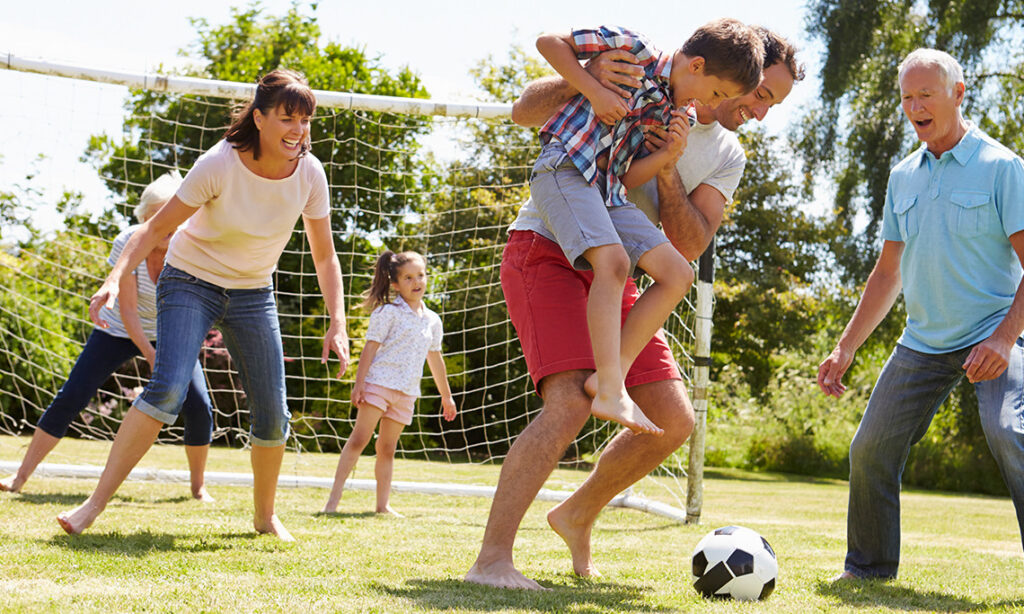Author: Dr. n. biol. Karolina Trzeciak, PhD
According to the 5S Strategy there are 5 spheres of life which should be worked on every day in order to maintain health and well-being at an optimal level. These 5 pillars of health are: Sensible nutrition, Superior fitness, Supplementation, Sufficient cleansing of the body from toxins and Stress management, which means working with the mind. In this article, we will look at the second of these elements.
In the 16th century Wojciech Oczko, a court physician to Polish kings, used to say that “movement can replace all medicines, but no medicine can replace movement”. Many people’s modern lifestyles and work routines do not make it easy to maintain appropriate levels of physical activity. Perhaps this is the reason why it seems that the importance of movement for human health has been somewhat rediscovered. It has been proven that active people, compared to inactive people, enjoy a better sense of wellbeing, less often suffer from physical and mental ailments such as lowered mood or headaches. Physical exertion seems to be the most important stimulator for building up the body’s resistance and strength. WHO (World Health Organization), FAO (Food and Agriculture Organization of the United Nations) and UNU (United Nations University) in a report from 2001 point out that the lack of exercise is undoubtedly related to civilization diseases and, above all, to the increase in the number of obese people in the world. In 2016, also the Polish IŻŻ (Institute of Food and Nutrition) updated its recommendations with the results of the latest research, creating the Pyramid of Nutrition and Physical Activity, thus indicating how important the latter is in a healthy lifestyle. It turns out that regular exercise reduces the risk of many diseases, such as obesity, diabetes, coronary heart disease, osteoarticular problems and many others. Regular exercise also has a greater impact on lowering cholesterol levels and the lipid profile than diet alone. In order to feel the beneficial effects of physical activity, it is not necessary to become a marathon runner right away; a simple walk will work just as well. According to WHO recommendations, the minimum level of physical activity for adults should include housework and other forms of low-intensity physical activity, as well as 2.5 hours per week of aerobic exercise. Recommendations for adults also include strength training involving different muscle groups, which should be performed at least twice a week. At the same time, the best form of exercise is that which you enjoy, so it is easier to keep up the regularity of exercise. Pedometers, which have been popular for some time, are also a good way to improve physical fitness. The results of many studies show that using these devices is associated with a significant increase in physical activity, reduction of body weight and blood pressure. The device itself, although it won’t force anyone to act, the result visible on the screen motivates to achieve the goal which is initially 10 000 steps a day. Once this goal is reached, people often set a new, more difficult one. It is important to get to know one’s own body and interpret the signals it sends in an appropriate way, gradually increasing one’s ability to train and, consequently, one’s physical fitness.
All parts of the human body are connected to each other by a series of interdependencies. The organism cannot be considered in isolation from the environment, which undoubtedly has an impact on it. The condition of health and well-being seems to be the maintenance of homeostasis, i.e. a state of balance between the body and the mind. Health is a process that still needs to be worked on. All actions in this direction have a real impact on how we will feel both now and in the distant future.
Sources:
- Academic MindTrek Conference: Envisioning Future Media Environments (pp. 111-116). ACM.
- Carrotte E. R., Vella A. M. and Lim M. S. (2015). Predictors of “liking” three types of health and fitness-related conltent on social media: a cross-sectional study. Journal of medical Internet research, 17(8), e205.
- Cattell V. (2001). Poor people, poor places, and poor health: the mediating role of social networks and social capital. Social science & medicine, 52(10), 1501-1516.
- Dziedzic B., Sienkiewicz Z., Zając P., Wiśniewski A. (2015). Wiedza pacjentów na temat czynników ryzyka choroby niedokrwiennej serca leczonych w specjalistycznej poradni kardiologicznej. Piel. Zdr. Publ. ; 5: 11–19.
- FAO/WHO/UNU (2004). Human energy requirements. Report of a Joint FAO/WHO/UNU Expert Consultation, Rome, 17-24 October 2001.
- Fleshner F. (2005). Physical activity and stress resistance: sympathetic nervous system adaptations prevent stress-induced immunosuppression. Exercise and sport sciences reviews, 33(3), 120-126.
- Foster D., Linehan C., Kirman B., Lawson S. and James, G. (2010). Motivating physical activity at work: using persuasive social media for competitive step counting. In Proceedings of the 14th International
- Kodama S., Tanaka S., Saito K., Shu M., Sone Y., Onitake, F. and Ohashi Y. (2007). Effect of aerobic exercise training on serum levels of high-density lipoprotein cholesterol: a meta-analysis. Archives of internal medicine, 167(10), 999-1008.
- Kris-Etherton P. M., Petersen K. and Van Horn L. (2018) „Convincing evidence supports reducing saturated fat to decrease cardiovascular disease risk.” BMJ Nutrition, Prevention & Health : bmjnph-2018.
- Michalski P., Kosobucka A., Nowik M., Pietrzykowski Ł., Andruszkiewicz A. and Kubica, A. (2016). Edukacja zdrowotna pacjentów z chorobami układu sercowo-naczyniowego. Folia Cardiologica, 11(6), 519-524.” Folia Cardiologica11.6 : 519-524.
- Red. Naukowa. Jarosz.M (2017). Normy żywienia dla populacji Polski. https://ncez.pl/abc-zywienia-/zasady-zdrowego-zywienia/normy-zywienia-2017
- World Health Organization. (2006). Constitution of the World Health Organization –Basic Documents, Forty-fifth edition, Supplement, October 2006.
- Zasady Prawidłowego Żywienia. IŻŻ, Warszawa 2016. Opracowanie pod kierownictwem prof. M. Jarosza http://www.izz.waw.pl/
